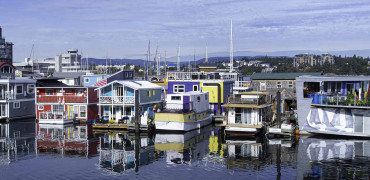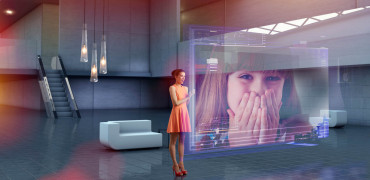Our urban areas are our most densely populated and it is predicted that by 2050 almost two thirds of our human species will be concentrated and squeezed into these areas.
Cities take up a tiny percentage of the earth surface, 2% in fact, but staggeringly also consume two thirds of the world's energy and produce approximately the same in CO2 emissions.
Urban rewilding is an exciting tool that can help to restore natural areas in these dense concrete zones.
The aim - to improve health and tackle the climate crisis. By readdressing the balance in our cities, it is hoped that we can redress the balance in the climate too.
As our awareness of the climate crisis grows deeper and deeper, it is refreshing to know that incorporating nature into our cities has become an important trend in architectural design.
Greenery, at last, is at the forefront and top of the list.
Embracing and reintroducing nature may help save the most complicated species of all.
Nature is fundamental
Rewilding our cities can and will help mitigate the harmful effects of climate change. We are talking about flooding, rising sea levels, pollution, and even disease.
Not only does green planting benefit our cities with carbon capture and pollution reduction but also green planting can capture and store excess water.
By introducing more green areas into our grey environment, not only can we create habitats for wildlife but also benefit our physical and mental wellbeing. Nature is fundamental to our survival.
Small costs
Our economic growth has been at the expense of our planet, the financial repercussions of our past will be monumental! Innovative structures like green roofs and walls are of course beautiful and aesthetically pleasing but also vital if we are to cool our planet.
By encouraging homeowners and businesses to install green walls, for relatively small costs, the positive impact for introducing habitats for birds and wildlife will be significant.
There is also a potential for street furniture to become an important element of rewilding.
Often ugly, street furniture can incorporate a biophilic design element. Bus shelters, bike stands, benches and even hostile vehicle mitigation elements can support flora and fauna and improve our ecosystem.
Successful examples of this can be seen across the globe.
Air purifying
Glasgow is testing a project called CityTree, designed by a German start-up.
It is a street furniture element that provides air-purifying solutions.
The structure consisted of biologically engineered moss and vascular plant species grown within a green wall system.
Rainwater is gathered and recycled through the system, irrigating the plants and moss.
The company claims that CityTree can combat air pollutants as effectively as 275 trees at only 5% of the cost and requiring 99% less space.
They also claim that a single CityTree can reduce air pollution by 30%.
Let’s reintroduce nature
As time becomes critical and catastrophic flooding and fires become more commonplace, let's hope that governments around the world commit and prioritise rewilding.
Rewilding our cities provides only benefits - improved air quality, climate change mitigation, improved human health, reduction of environmental management costs and temperature regulation.
It feels like many of our targets set for the climate crisis are not being and have not been achieved.
By supporting nature, embracing it and reintroducing it, not only will we be benefitting many many species but we may also be saving the most complicated of all.
Kirsty Hammond is publisher and editor of Specifier Review




